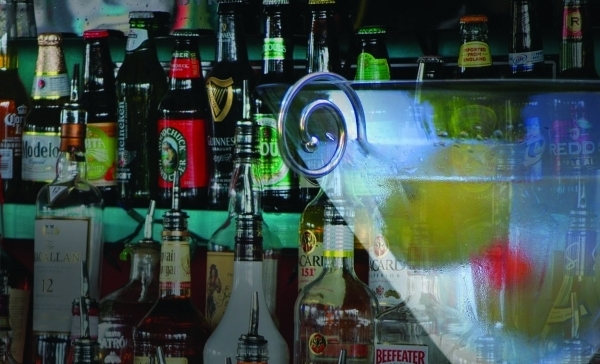
Happy New Beer

The Year of The Rooster is upon us and, as ever, it is only fitting that we welcome it with champagne all round. As the year progresses, though, what else should we be looking to fill our glasses with?
As in so many other aspects of our lives, our drinking habits have become increasingly subject to fashion. At one time, we used to form long-lasting loyalties to wine regions, spirit categories and brands and even to particular cocktails. Such allegiances were formed early in adulthood and then we stuck to them for years.
Such days are gone. Now we thirst for novelty. In certain quarters, though, there is a certain nostalgia for the way things used to be.
Our former habits had the merit of making life easier for bartenders. Customers would come through the door of their preferred watering hole and their favoured tipple would be waiting for them by the time they got to the bar.
Knowing a customer’s preferences was a matter of professional pride for a bartender. These days, though, that sort of service is no longer appreciated. Preferences change from day-to-day and many don’t care to have their choices pre-empted.
Even champagne has fallen victim to fashion. At present, the consumption of prosecco and cava is growing steadily across the world, while French bubbles are being very much left behind.
In 2016, champagne shipments to China fell for the fourth consecutive year. They are not expected to pick up any time soon.
Of course, fickle fashion is only one factor in this decline. With conspicuous consumption of premium priced products now officially frowned upon across the mainland, whisk(e)y, cognac and champagne have all taken a hit, along with the more expensive red wines.
Indeed, such anti-extravagance policies are undeniably shaping trends in the drinks sector. With First Growth Bordeaux and Grand Cru Burgundy now believed to be best drunk discreetly in private, people are more inclined to investigate less ambitiously priced wines.

They are finding that true quality can be found at far more affordable prices. Indeed, recognising value is at the heart of connoisseurship. In line with this, while austerity may be bad news for the most expensive tiers of Bordeaux and Burgundy, over the next year or so more and more people are likely to be looking at what the wines of Spain, Italy, Portugal and the New World producers have to offer.
Lesser known European wine producing countries are also looking to make inroads into Hong Kong and China. The exhibitor list for last November’s Hong Kong International Wine Fair is proof positive of that particular development.
Tellingly, Hungary, Slovenia and Croatia were all listed among the countries with wines to promote. Despite that, though, France and Italy still garnered the most attention.
In another development, patriotic purchasing power and the increasing volume of better quality domestic wines from within China itself should make the Year of the Rooster a banner one for the mainland’s growing number of wine estates. Last November saw the launch of the first Ao Yun vintage from Moet Hennessy, a new red wine made from grapes grown in the Himalayan heights of North Yunnan.
In total, only 24,000 bottles of the 2013 vintage have been produced. Indeed, it has taken Moet’s operation some time to get to the point where it felt the wine was good enough to release at all. According to Jean-Guillaume Prats, president and chief executive of Moet Hennessy Estates & Wines, now that it has got there, the aim is to improve the wine with each vintage. Its avowed aim is to be “not only high quality, but world class.”
There is also speculation that the Year of the Rooster might finally see Greater China learn to appreciate the great white wines. While such a development is long overdue, Asia is quite different to the other new markets around the world. Typically, white wine has found a foothold in such territories well before the reds have made any headway. It will be interesting to see just how much progress can be made.

In China and Hong Kong, Western grape wine continues to be an “aspirational” drink, a status that baijiu – or at any rate any baijiu below state banquet grade – doesn’t quite enjoy. This, though, could very well be the year in which attempts to drag it upmarket bear some fruit.To be fair, it possibly makes more sense than mixing cocktails with tea. At one recent cocktail competition in Hong Kong, about half the bartenders used tea leaves, apparently because they wanted their creations to have a distinctively Chinese character.
That particular trend has, hopefully, run its course. Tea usually masks the spirit base and dulls the taste of defining ingredients.
In Hong Kong, the middle ground between uncompromising hard liquor classics – such as the Dry Martini and the Negroni – and alcohol-free mocktails is being occupied by fruity acidic concoctions, all with too many ingredients and all with very little kick.
Contributing to this problem is the fact that many people – a clientele that now has to be accommodated – have learned to love cocktail bars, without really understanding cocktails.
Among the bubbles forecast to burst this year are the gin and the craft beer bubbles. We’ve heard lots about both over the past few years and it’s probably true that they are due for a market correction, with some of the sillier products falling by the wayside. At least, let’s hope so.







